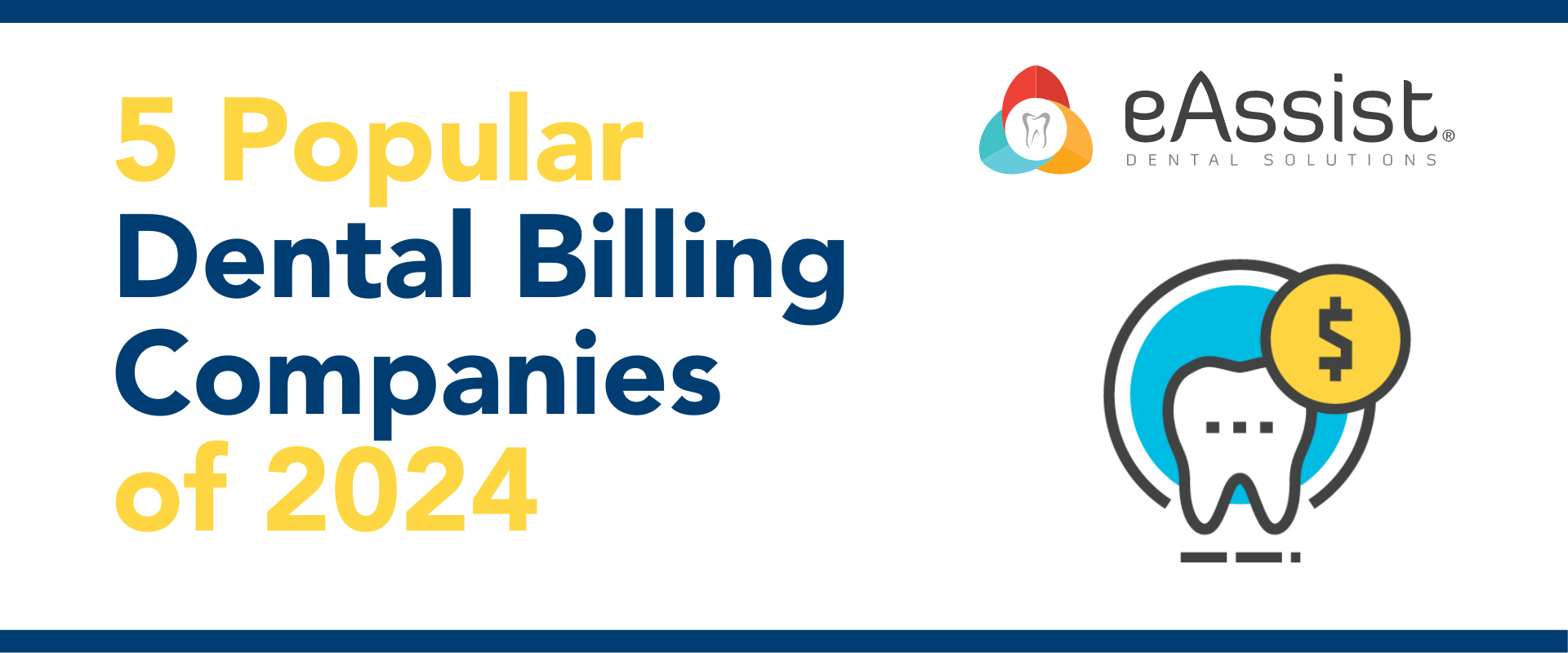What are production goals?
Production goals refer to the number of procedures you’d like your office to achieve. Goals can be calculated for the year, quarter, month, day, and even hour. We recommend using your cost numbers to work backwards in order to set production goals per chair per hour (more details in this article). This will give your team a clearly defined target to work towards each day.
Why are production goals important?
Setting production goals helps dental teams know whether they are seeing enough patients or need to pivot. By setting and measuring goals, you can know exactly how your team is performing. You’ll also be able to identify areas of improvement.
How can I set production goals?
To get an idea of the desired production, you need to know three things:
- Average collection ratio
- Break-even costs
- Surplus revenue over break-even
The collection ratio will enable you to calculate the desired production based on your collection goals. The latter two items will give us an idea of the collections needed to support your costs and surplus revenue goals. Once we have an idea of what collections are needed, we can use the average collection ratio to determine the production goal. To start, let’s break these three items down. You can also follow along by downloading our complimentary production goals worksheet.
How to calculate your collection ratio
To determine this, divide your total collected funds by your net production. If your office has been open for a while, it is recommended to calculate this based on a one-year period. If your collections ratio is less than 98%, then you are likely missing out on revenue that could be yours through streamlined dental and patient billing processes. eAssist’s dental and patient billing platform can help you collect 100% of what is rightfully owed to you. Click here to schedule a chat to learn more.
How to calculate your break-even costs
Break-even costs consist of the following:
- Owner’s income goal (for all owners). As a general guideline, owners should receive a minimum of 35% of the practice collections before taxes – divided among all owners
- Fixed costs, which includes facility and equipment costs. These typically range from 15-20% of your total costs.
- Variable costs, including staffing expenses. For general dentistry or periodontal practices, staff salaries will typically amount to approximately 20%, or more, of collections. However, this percentage may vary for other specialties such as endodontics, oral surgery, orthodontics, or pediatric offices, where staff salaries might range from 15-18%
To formally calculate your break-even costs, you should systematically add up all costs. This can be done by analyzing your income statement to add up all the costs listed above.
A simple alternative to determine your break-even costs is to use the staffing expense as your point of reference. For example, if gross staff salaries amount to 20% of collections (for general dental practices), we can multiply the gross staff salaries by 5 to get an estimate of the total collections needed to cover all costs. This is because 5 is the reciprocal of 20%, which means multiplying 20% by 5 will get us to 100%. Let’s assume the gross staff salaries are $20,000 per month. Multiplying this by five gives us a break-even collection goal of $100,000 per month. Remember, this break-even collections goal is the bare minimum collections needed to cover all costs.
How to determine the surplus revenue over break-even
Keep in mind that the break-even number calculated using the staffing expense percentage already includes the owner’s income goal. The surplus revenue over break-even can be used for other things. We recommend using this revenue to offer team bonuses. Doing so will incentivize your team to meet (and surpass) the office’s production goals. Combining goal setting and team bonuses may seem unusual at first glance, but they are intricately linked. To establish a bonus system that benefits both the doctor and the team, it is vital to ensure that the practice goals generate sufficient revenue to allow for team bonuses. Bonuses can significantly boost morale and productivity, provided they are implemented with careful planning and clear rules, avoiding the need for subsequent changes or reductions.
Let’s say that you would like to use surplus revenue over break-even to offer team bonuses. Here is how you would go about calculating that value.
- Collaborate with all owners and team managers to set a bonus goal. Make sure they comprehend the numbers and objectives.
- Meet with your team to discuss the bonus goal. Involve the team in deciding the bonus amount they want to strive for each month, emphasizing that the figure is a gross amount subject to taxation. Allowing the team to participate in this decision-making process promotes ownership and accountability.
- Work backwards from the desired bonus goal to determine the necessary collections and subsequently necessary production to meet the bonus goal.
Continuing with the example above, let’s assume the desired break-even collections goal is $100,000. In this scenario, the team will be eligible for a bonus equal to 20 percent of collections above the base goal, calculated on a three-month rolling average. This three-month average serves several purposes:
- i. It prevents paying bonuses solely based on the current month’s figures, which might not be sufficient to cover practice overhead if the previous month’s collections were low.
- ii. If the practice experiences a month of low collections but had strong collections in the prior two months, the team may still be eligible for some form of bonus.
- iii. It discourages the temptation of abandoning efforts to meet the goal for the current month, with the intention of rescheduling patients for the following month.
The formula for calculating the surplus revenue over break-even is as follows:
Last three months’ average collections – Last three months’ average staff salaries x five = the dollar amount over break-even.
Then, multiply the dollar amount over break-even by 20 percent to determine the bonus pool available for that month.
Finally, divide the bonus pool by the number of team members to calculate the individual bonus amount per team member.
Here’s an example illustrating the calculation of bonuses for March, using a break-even collections figure of $100,000:
- Collections: January: $115,000 February: $110,000 March: $117,000 Total: $342,000 Three-month average: $114,000
- Staff Salaries x Five (Break-even Goal): January: $102,000 February: $98,000 March: $100,000 Total: $300,000 Three-month average: $100,000
- Last three months’ average collections ($114,000) minus last three months’ average staff salaries x five ($100,000) equals $14,000 over break-even.
- Twenty percent of the amount over break-even ($14,000) goes to staff, resulting in $2,800. If there are six team members, each team member would receive a bonus of $466 for March.
- Suppose the team chooses to aim for a $700 bonus per individual per month. Working backward, calculate the target bonus goal:
- $700 bonus multiplied by six team members equals a bonus pool of $4,200. Multiply this by five to determine the amount over break-even required.
- This implies that $21,000 above the break-even goal of $100,000, or $121,000 in collections per month, is needed.
- Next, divide the target collections goal of $121,000 by the practice collections percentage to determine the production goal. For instance, if the practice collections percentage is 98 percent, divide $121,000 by 98 percent to obtain a net production goal of $123,470.
- Assuming the practice operates four days a week, approximately sixteen workdays per month can be expected. Divide the production goal of $123,470 by 16 days to achieve a daily target of $7,717.
- In a general practice, the hygiene department typically generates 35-40% of the total production. For this example, allocate 65 percent to operative and 35% to hygiene.
- Consequently, the operative department’s daily goal would be $7,717 multiplied by 65%, resulting in $5,016 per day. If the doctor works in two rooms, this equates to $2,508 per chair per day. With an eight-hour workday, this corresponds to $314 per chair per hour.
- Similarly, the hygiene department’s daily goal would be $7,717 multiplied by 35%, amounting to $2,701 per day. With two hygiene chairs, the goal per chair per day would be $1,351, or $169 per chair per hour.
Now we have a clear understanding of what is necessary to achieve the target bonus goal of $700 per team member, which surpasses the practice goals considering overhead, notes payable, and desired income for the doctors.
Bringing it all together to calculate a production goal
Once you’ve determined your target collections goal (based on break-even costs and surplus desired for bonuses and the like), you can use your collections ratio to determine the production goal. To do this, simply divide the monthly collections goal by the collections ratio. And voila! That is your net production goal for the month.
You can break your net production goal down to a daily goal by dividing the monthly total by the number of workdays per month.
Once you have the daily goal, you can calculate the goal per chair per hour for operative and hygiene. The operative typically counts for 65% of production and hygiene for 35%. To calculate the operative goal per chair per hour, multiply the daily goal by 65%. Then divide the daily goal by the number of operative rooms. That will give you the daily goal per chair. Finally, divide that goal by the number of work hours in the day. This will give you the operative production goal per chair per hour. To calculate the hygiene goal, follow the same process but multiply the daily goal by 35%.
Conclusion
Intentional planning and scheduling play a crucial role in meeting practice goals. If any time off is scheduled for vacation or continuing education, it might be necessary to occasionally adjust for those days by ensuring the number of workdays does not fall below the desired monthly threshold.
It is advisable to hold at least one planning session per year with the team. During this session, bring along practice figures, a large calendar, dates when the office will be closed for holidays or vacations, and begin mapping out the schedule. Additionally, review training and delegation goals to ensure the team is maximizing their abilities in assisting with patient treatment. Regularly reviewing your state’s practice act ensures compliance and awareness of any procedural changes that can be delegated.
Setting and monitoring goals and actual figures monthly provides more opportunities for course corrections compared to solely relying on annual goals reviewed once a year. If a particular month falls short, it is important to maintain a positive mindset, letting go of the past and approaching the following month with renewed determination to execute the plan effectively.
If you’re looking to improve your production, consider outsourcing your dental billing. Offices that outsource dental billing through eAssist see a $55,000 increase in total production and $50,000 increase in net production, on average. Click here to schedule a risk-free consultation today.








0 Comments